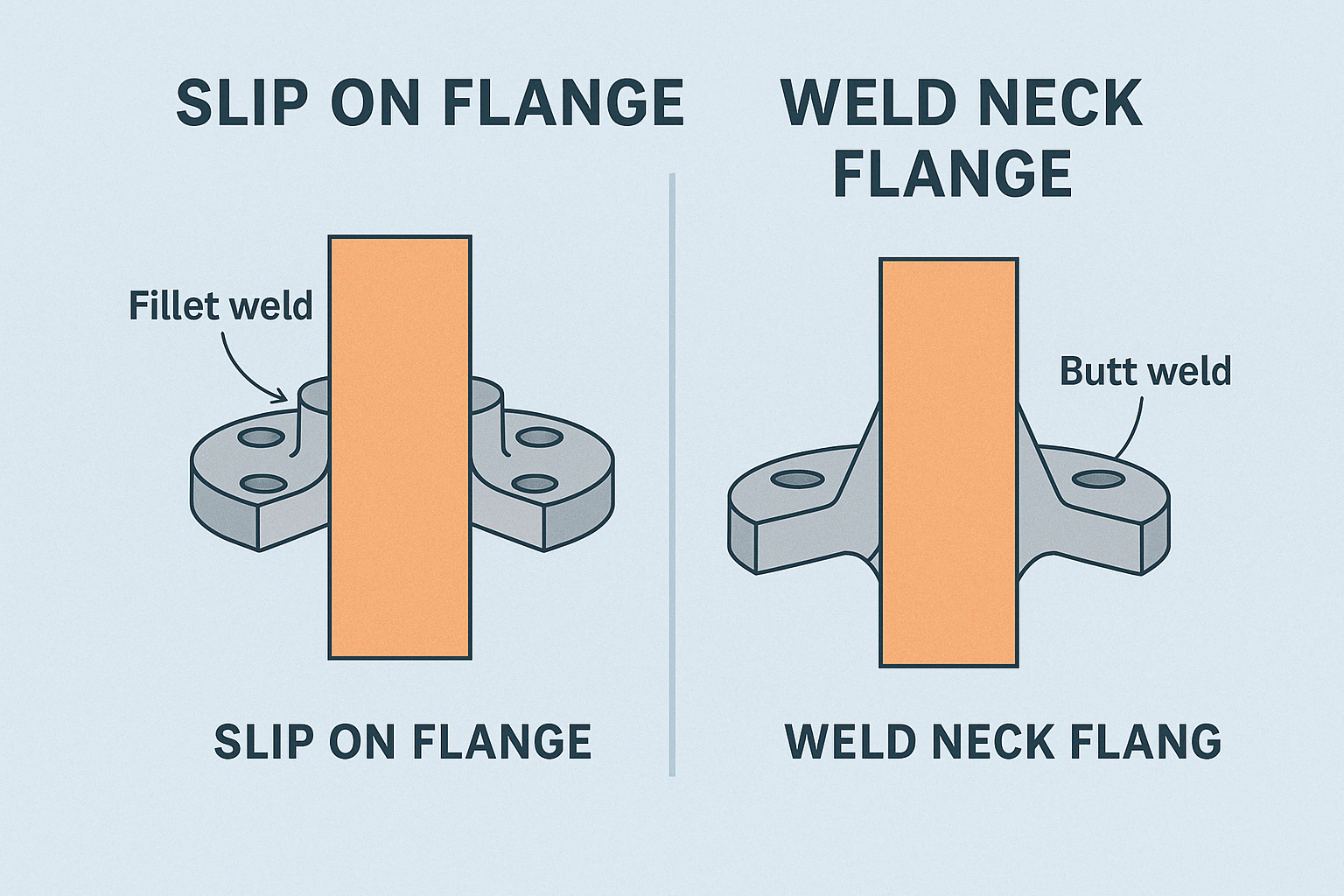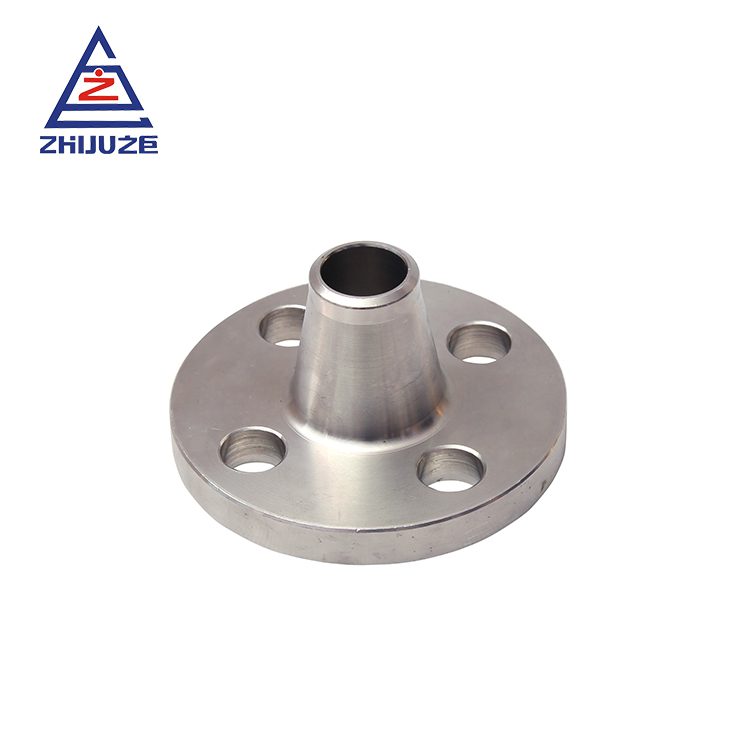- Whatsapp: +8615888732798
- Email: [email protected]
Choosing the right flange type is essential to ensuring the safety, reliability, and longevity of your piping system. Among the most commonly used options are the Slip On (SO) flange and the Weld Neck (WN) flange. Though both are designed to connect pipes, valves, and other components, they differ significantly in structure, strength, and suitability for various pressure and temperature conditions.
Slip On flanges are easier to install and cost-effective, making them suitable for low-pressure, non-critical systems. In contrast, Weld Neck flanges feature a long tapered hub and a butt-weld connection, offering superior strength, fatigue resistance, and performance in high-stress environments.
In this blog, we take a closer look at the key differences between Slip On and Weld Neck flanges, comparing them across eight critical engineering dimensions—from design and welding method to fatigue life, flow efficiency, and long-term cost. Whether you’re planning a new build or assessing flange slip on welding in an upgrade, this guide will help you make a confident, technically sound decision.

The Slip On flange is designed to slip over the pipe and is typically welded on both the inner and outer sides using fillet welds. It has a flat or slightly raised face and a short hub. The pipe is inserted into the flange bore, typically penetrating a short distance past the sealing face. This type of flange is often fabricated from steel plate flange materials and is commonly used in flat flange profiles.

The Weld Neck flange features a long, tapered hub that gradually transitions into the pipe. It is connected using a butt weld, which aligns the flange bore and pipe bore, resulting in a smooth stress transition. It is typically manufactured as a forged steel flange, offering excellent structural integrity.
Weld Neck flanges are designed to integrate structurally with the pipe, distributing mechanical stress along the tapered hub. Slip On flanges, by contrast, have abrupt transitions that can cause localized stress points. This influences not only stress distribution but also fatigue resistance over time.
Strength and fatigue resistance are critical in systems exposed to cyclic loading, such as high-pressure steam pipelines or vibration-prone services.
Flow performance is particularly important in high-speed and high-viscosity fluid systems.
Conclusion: For budget-limited, non-critical systems, SO flanges are preferred. For durability, longevity, and performance, WN flanges win. This cost comparison demonstrates the importance of aligning flange selection with system priorities.
When deciding between these two flange types, consider the following:
Both Slip On and Weld Neck flanges have their place in piping system design. While Slip On flanges offer simplicity and cost savings, Weld Neck flanges deliver superior performance, especially in critical applications where fatigue resistance, pressure, and long-term reliability are concerns. By evaluating your project needs through these eight engineering dimensions, you can confidently select the right flange for your system.
Privacy Policy
Copyright ZHEJIAGN ZHIJU PIPELINE INDUSTRY Co.,Ltd SUPPORT BY :JUNJ